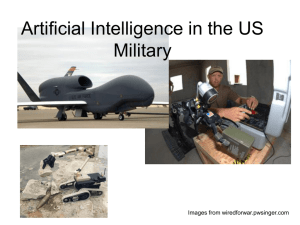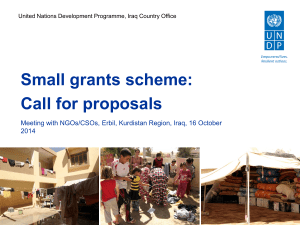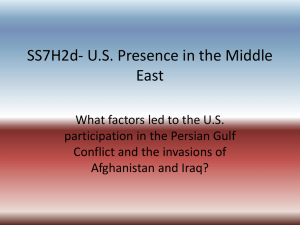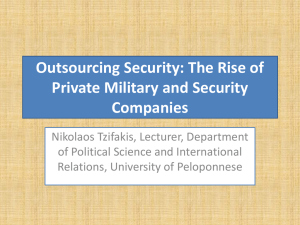Assignment 2
advertisement
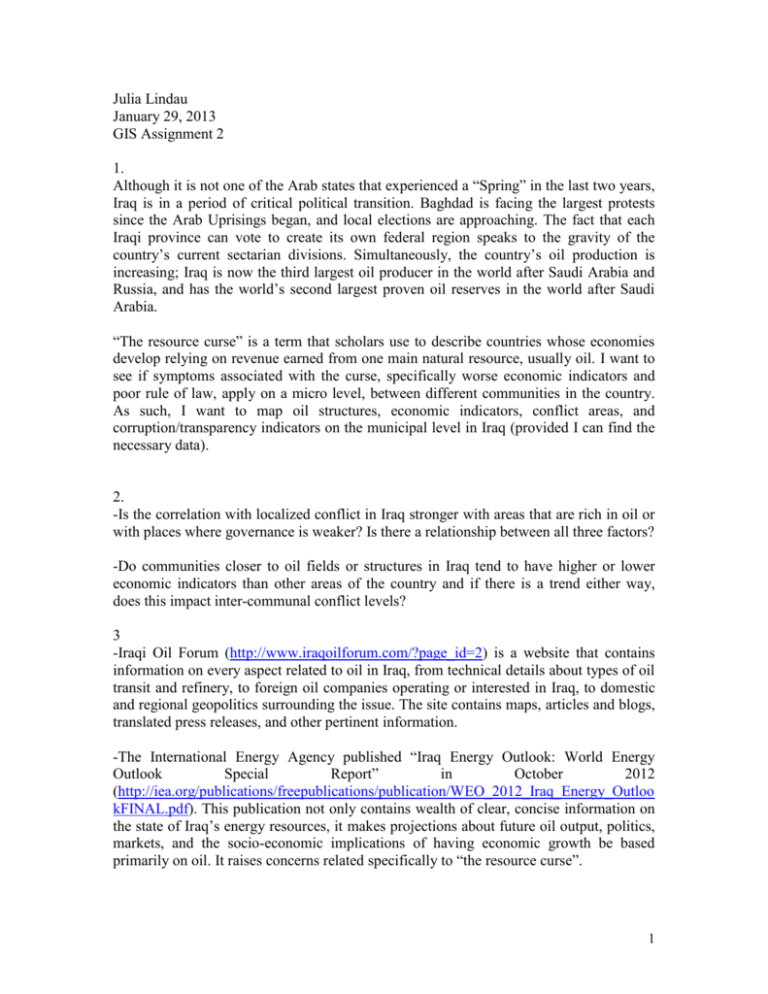
Julia Lindau January 29, 2013 GIS Assignment 2 1. Although it is not one of the Arab states that experienced a “Spring” in the last two years, Iraq is in a period of critical political transition. Baghdad is facing the largest protests since the Arab Uprisings began, and local elections are approaching. The fact that each Iraqi province can vote to create its own federal region speaks to the gravity of the country’s current sectarian divisions. Simultaneously, the country’s oil production is increasing; Iraq is now the third largest oil producer in the world after Saudi Arabia and Russia, and has the world’s second largest proven oil reserves in the world after Saudi Arabia. “The resource curse” is a term that scholars use to describe countries whose economies develop relying on revenue earned from one main natural resource, usually oil. I want to see if symptoms associated with the curse, specifically worse economic indicators and poor rule of law, apply on a micro level, between different communities in the country. As such, I want to map oil structures, economic indicators, conflict areas, and corruption/transparency indicators on the municipal level in Iraq (provided I can find the necessary data). 2. -Is the correlation with localized conflict in Iraq stronger with areas that are rich in oil or with places where governance is weaker? Is there a relationship between all three factors? -Do communities closer to oil fields or structures in Iraq tend to have higher or lower economic indicators than other areas of the country and if there is a trend either way, does this impact inter-communal conflict levels? 3 -Iraqi Oil Forum (http://www.iraqoilforum.com/?page_id=2) is a website that contains information on every aspect related to oil in Iraq, from technical details about types of oil transit and refinery, to foreign oil companies operating or interested in Iraq, to domestic and regional geopolitics surrounding the issue. The site contains maps, articles and blogs, translated press releases, and other pertinent information. -The International Energy Agency published “Iraq Energy Outlook: World Energy Outlook Special Report” in October 2012 (http://iea.org/publications/freepublications/publication/WEO_2012_Iraq_Energy_Outloo kFINAL.pdf). This publication not only contains wealth of clear, concise information on the state of Iraq’s energy resources, it makes projections about future oil output, politics, markets, and the socio-economic implications of having economic growth be based primarily on oil. It raises concerns related specifically to “the resource curse”. 1 -“Barriers to Reconciliation in Iraq: Tensions between Sunnis, Shi’ites, and Kurds, and the Role of External Powers” published by the Center for Strategic and International Studies in 2010 is a comprehensive document that outlines various sources of conflict in post-2003 Iraq, with an emphasis on ethno-sectarian divisions. The document contains several references to specific places where tensions are high due to oil reserves. It also has maps of oil fields, ethnic compositions, and other useful spatial data. -The Revenue Watch Institute publishes information about transparency and corruption as they relate to oil in Iraq (http://www.revenuewatch.org/countries/middle-east-andnorth-africa/iraq/transparency-snapshot). It discusses issues of corruption from the local to the national levels, addresses the interests of government, individual, and businesses, and has tabular data containing numbers on production, output, revenue, etc. of oil. 4. -The International Energy Agency has maps with oil pipelines, fields, and refineries in Iraq, as do several other open source websites. -“Iraq Index: Tracking Variables of Reconstruction & Security in Post-Saddam Iraq” http://www.brookings.edu/~/media/Centers/saban/iraq%20index/index20120200.pdf, also a free source, contains detailed data about oil exports, security, and transparency, all of which are themes related to my research questions. However, there is not much data here on a municipal level. 2



